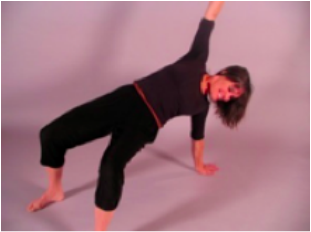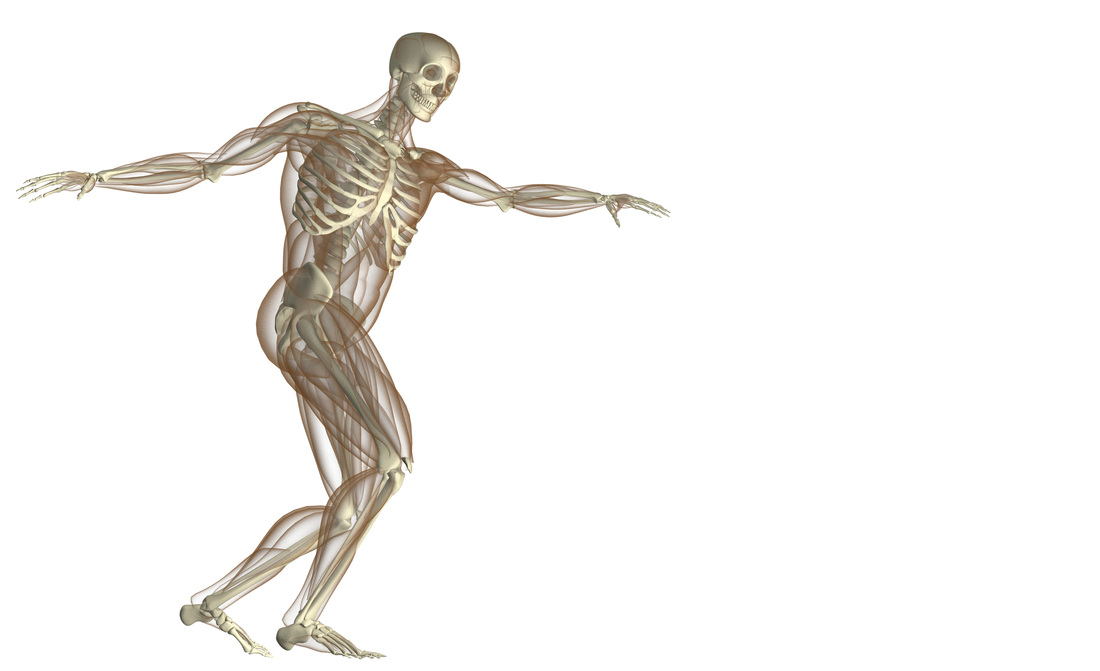Wholeness in Motion - Origin
Wholeness in Motion began as an attempt to see if it was possible to teach movement based on new science about skill acquisition, efficient coordination and the Elastic Suspension System model of human structure. The new motor-learning paradigm is that our system is a coordinating system, it is NOT designed to function well by manipulating/positioning body parts. Any instruction like “lift your sternum”, “pull in your abs”, “move your hand” creates a crude coordination that essentially trains inefficiency into the body-divides our unified self into body-mind. Instead of instructing you how to move Wholeness in Motion facilitates you:
I have over 40 years of movement training (dance/yoga-you name it, I did it) almost all of which used focusing on body parts as a primary means of training. I see why that approach made sense; a teacher sees a harmful habit or pattern in the person and wants to help. The dominate worldview is dualistic. How could we do anything else?
The latest discoveries about human functioning raise new questions:
These were the real questions I had when I began this research. The answer is mostly a resounding YES.
I had a yoga teacher come back after a class ecstatic about how this fundamental change in her perspective and the consequent change in her language transformed her yoga experience for herself and her students.
Words can't adequately convey the distinction. I invite you to come and experience how this material contributes to the rich wealth of movement work that is out there.
Go to classes and join Living Wholeness or other workshops in which Wholeness in Motion is foundational material.
- To develop your own experiential criteria to sense what works for your body and what doesn't.
- An exploratory approach to stature and movement in which you learn principles for understanding your physicality, your balance, your volume, space, mobility, strength, dynamic range and miraculous design.
I have over 40 years of movement training (dance/yoga-you name it, I did it) almost all of which used focusing on body parts as a primary means of training. I see why that approach made sense; a teacher sees a harmful habit or pattern in the person and wants to help. The dominate worldview is dualistic. How could we do anything else?
The latest discoveries about human functioning raise new questions:
- How can a person change an inefficient physical pattern without adjusting or directing body parts?
- How can a person do a particular core strength exercise and not hurt her back if we don't say "tone your abs"?
- Is it possible to teach from a different set of principles?
- Would there be an advantage to teaching in accordance with the way our system works?
These were the real questions I had when I began this research. The answer is mostly a resounding YES.
- Wholeness in Motion is a pedagogical approach you can incorporate into the movement forms you currently love to do.
I had a yoga teacher come back after a class ecstatic about how this fundamental change in her perspective and the consequent change in her language transformed her yoga experience for herself and her students.
Words can't adequately convey the distinction. I invite you to come and experience how this material contributes to the rich wealth of movement work that is out there.
Go to classes and join Living Wholeness or other workshops in which Wholeness in Motion is foundational material.
The spirit of the work from other voices, (with some wholeness language edits in parenthesis from - Babette -bl)
"It makes a wonderful difference whether we find in the body(self - bl) an ally or an adversary." Johann Wolfgang von Goethe
"To see a world in a grain of sand
And heaven in a wild flower,
Hold infinity in the palm of your hand
And eternity in an hour.” William Blake
"As we impose our somewhat limited concepts on to ourselves, we gradually lose touch with ourselves, denying our natural urges and ignoring our feelings and generally trying to control things. As we cease to 'be' our bodies, but now 'have' our bodies, we lose touch with our ability to sense what is appropriate and of value to us.” David Gorman
"When training to live in our world of constant change, training to enjoy the ever changing relationship movement demands may be the most comprehensive training for basic intelligence." Peggy Hackney
The pre-sprung elastic suspension system model shows that the "real resolution between the seemingly conflicting demands of stability and mobility is complete support at all times with no holding while simultaneously having total openness in your being and freedom in your actions." David Gorman
"This function of supportedness or stability is primary in one sense, in that it needs to be present all the time in everything we do… support is a prerequisite and underlying foundation for all movement." David Gorman
"Each time you pick up a book from the table, you effortlessly overcome the combined gravitational exertion of an entire planet." Bryson
"When movement is liberated from the constricting armor of stylized, pre-conceived gestures, an innate feedback process between movement and feeling is generated." Anna Halprin
"If we can learn to read our own responses to our own experience – a test we are writing unconsciously every day we spend on earth – we will receive the guidance we need to live more authentic lives.” Parker Palmer
"So according to Socrates, the teacher assists the inquiring mind (being-bl) of the learner to give birth to knowledge, facilitating the process of discovery on the learners part."' Mortimer Adler
"Only when teachers realize that the principle cause of learning that occurs in a student is the activity of the student's own mind (being -bl) do they assume the role of cooperative artist." Mortimer Adler
"Attending to sensory communications from the world dissolves the boundary between self and the world." Harrod Buhner
"The mystery of life isn't a problem to solve but a reality to experience." Frank Herbert
Wholeness in Motion — The Three Movement Sequences
For more on the Sequences and recordings: LINK
The forms and content of Wholeness in Motion (WIM) are designed to be a comprehensive way to experience the innate capability of your system to BE well-being, to be perceptive, responsive, clear, strong, expressive and rooted in love and joy, to move with ease and intelligence, to be free to be yourself.
1. Ocean Sequence - Earth to Sky Flow
2. The Animal Sequence
3. Patterns of Nature — Patterns of Joy
"It makes a wonderful difference whether we find in the body(self - bl) an ally or an adversary." Johann Wolfgang von Goethe
"To see a world in a grain of sand
And heaven in a wild flower,
Hold infinity in the palm of your hand
And eternity in an hour.” William Blake
"As we impose our somewhat limited concepts on to ourselves, we gradually lose touch with ourselves, denying our natural urges and ignoring our feelings and generally trying to control things. As we cease to 'be' our bodies, but now 'have' our bodies, we lose touch with our ability to sense what is appropriate and of value to us.” David Gorman
"When training to live in our world of constant change, training to enjoy the ever changing relationship movement demands may be the most comprehensive training for basic intelligence." Peggy Hackney
The pre-sprung elastic suspension system model shows that the "real resolution between the seemingly conflicting demands of stability and mobility is complete support at all times with no holding while simultaneously having total openness in your being and freedom in your actions." David Gorman
"This function of supportedness or stability is primary in one sense, in that it needs to be present all the time in everything we do… support is a prerequisite and underlying foundation for all movement." David Gorman
"Each time you pick up a book from the table, you effortlessly overcome the combined gravitational exertion of an entire planet." Bryson
"When movement is liberated from the constricting armor of stylized, pre-conceived gestures, an innate feedback process between movement and feeling is generated." Anna Halprin
"If we can learn to read our own responses to our own experience – a test we are writing unconsciously every day we spend on earth – we will receive the guidance we need to live more authentic lives.” Parker Palmer
"So according to Socrates, the teacher assists the inquiring mind (being-bl) of the learner to give birth to knowledge, facilitating the process of discovery on the learners part."' Mortimer Adler
"Only when teachers realize that the principle cause of learning that occurs in a student is the activity of the student's own mind (being -bl) do they assume the role of cooperative artist." Mortimer Adler
"Attending to sensory communications from the world dissolves the boundary between self and the world." Harrod Buhner
"The mystery of life isn't a problem to solve but a reality to experience." Frank Herbert
Wholeness in Motion — The Three Movement Sequences
For more on the Sequences and recordings: LINK
The forms and content of Wholeness in Motion (WIM) are designed to be a comprehensive way to experience the innate capability of your system to BE well-being, to be perceptive, responsive, clear, strong, expressive and rooted in love and joy, to move with ease and intelligence, to be free to be yourself.
1. Ocean Sequence - Earth to Sky Flow
2. The Animal Sequence
3. Patterns of Nature — Patterns of Joy


